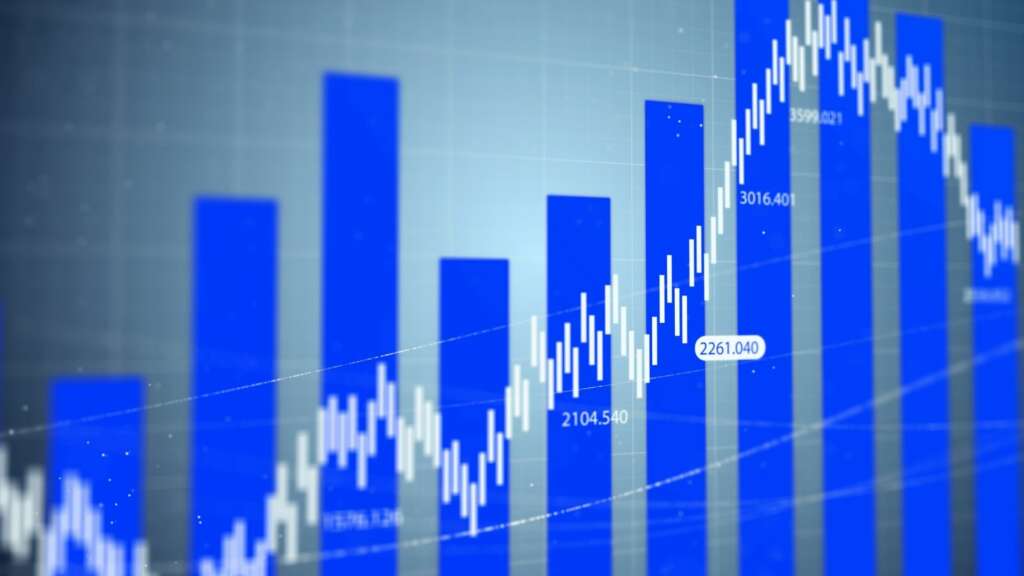
How to read Forex charts
In the dynamic world of foreign exchange (Forex) trading, the ability to decipher and interpret Forex charts is a fundamental skill for traders of all levels. These charts are the windows into the heart of the global currency markets, offering insights into price movements, trends, and potential trading opportunities. Whether you are a novice looking to embark on your Forex trading journey or an experienced trader seeking to enhance your chart analysis skills, this comprehensive guide aims to demystify the art of reading Forex charts.
Explanation of the importance of Forex charts
Forex charts are indispensable tools for traders in the foreign exchange market, and their importance lies in several key aspects:
- Visual representation of price data: Forex charts provide a visual representation of historical and real-time price data for currency pairs. They condense vast amounts of information into easily digestible formats, allowing traders to quickly assess price trends and patterns.
- Technical analysis: Charts serve as the foundation of technical analysis, a popular trading approach. Traders use various chart patterns, indicators, and trendlines to identify potential entry and exit points, forecast price movements, and manage risk.
- Timing and decision-making: Traders rely on Forex charts to make timely decisions. By analyzing chart patterns and indicators, they can gauge market sentiment, identify support and resistance levels, and determine the optimal timing for executing trades.
- Risk management: Charts assist in setting stop-loss and take-profit levels, essential components of risk management. Traders can calculate risk-to-reward ratios based on chart patterns and price levels, helping them protect their capital.
- Long-term and short-term strategies: Forex charts are versatile tools suitable for both short-term and long-term trading strategies. Traders can choose different timeframes (e.g., daily, hourly, minute) to align with their trading goals and styles.
- Market sentiment: Charts can reflect market sentiment and sentiment shifts. Sudden price spikes, reversals, or patterns like “Engulfing” Candles can signal changes in sentiment that traders can leverage for potential profit.
- Understanding Forex charts
Types of Forex charts
- Line charts: Line charts are the simplest type of Forex chart. They represent the closing prices of currency pairs over a specific period, connecting these closing prices with a line. Line charts offer a high-level view of price trends but lack detailed information, making them suitable for a quick overview of market direction.
- Bar charts: Bar charts provide more information than line charts. They display four crucial price points for each period: The opening price, closing price, highest price (high), and lowest price (low). Traders use the vertical bars to analyze price movement within a chosen timeframe. Bar charts are particularly useful for identifying price ranges and trends.
- Candlestick charts: Candlestick charts are the most popular and informative type of Forex chart. They provide the same information as bar charts but in a visually intuitive way. Each period is represented as a “Candlestick” With a “Body” (the difference between the opening and closing prices) and “Wicks” Or “Shadows” (the high and low prices).
Selecting the right chart type for analysis:
Choosing the appropriate chart type for your analysis depends on your trading goals, time horizon, and personal preferences
- Line charts are suitable for traders looking for a quick overview of long-term trends but lack the detail needed for precise entry and exit points.
- Bar charts offer more information and are valuable for identifying key price levels and patterns, making them suitable for medium-term analysis and swing trading.
- Candlestick charts are the most versatile and widely used. They provide comprehensive insights into price action and are essential for short-term and intraday trading, as well as for spotting reversal and continuation patterns.
It’s essential to become proficient in interpreting all three types of charts to adapt to different trading scenarios.
Components of Forex charts
- X-axis (time)
- Different timeframes (e.g., daily, hourly, minute): Forex charts allow traders to view price data over various timeframes, from minutes to years. Shorter timeframes (e.g., 1-minute, 5-minute) provide detailed, real-time data, while longer timeframes (e.g., daily, weekly) offer broader trend perspectives.
- Importance of choosing the appropriate timeframe: The choice of timeframe is crucial as it impacts trading strategies. Short-term traders may focus on intraday charts, while long-term investors prefer daily or weekly charts to identify broader trends.
- Y-axis (price)
- Understanding currency pair prices: The y-axis of a Forex chart represents the price of the currency pair being traded. Understanding how to read these price levels is essential for analyzing potential entry and exit points.
- Bid and ask prices: Forex charts often display both bid and ask prices. The “Bid” Is the price at which you can sell a currency pair, while the “Ask” Is the price at which you can buy it. The difference between the bid and ask prices is known as the “Spread.”
Candlestick components (for candlestick charts)
- Body: The candlestick body represents the difference between the opening and closing prices during a specific timeframe. A filled (black or red) body indicates that the closing price is lower than the opening price, while a hollow (white or green) body suggests the closing price is higher.
- Wick or shadow: The wicks or shadows extend above and below the candlestick body, representing the high and low prices during the timeframe. Long upper wicks indicate price rejection at higher levels, while long lower wicks suggest rejection at lower levels.
- Colors and their significance: In candlestick charts, colors play a significant role. The choice of colors can vary between charting platforms, but common conventions include green/white for bullish (upward) candles and red/black for bearish (downward) candles.
Reading Forex candlestick patterns
- Basic candlestick patterns
- Doji: A doji candlestick has a small body and represents market indecision. It occurs when the opening and closing prices are very close or nearly identical. Traders watch for doji patterns as they often signal potential reversals.
- Engulfing: An engulfing candlestick pattern occurs when a larger candle “Engulfs” The previous candle, indicating a potential reversal. A bullish engulfing pattern forms after a downtrend, while a bearish engulfing pattern follows an uptrend.
- Hammer and shooting star: These are single-candle patterns. A hammer is a bullish reversal pattern characterized by a small body and a long lower wick, typically forming after a downtrend. A shooting star is its bearish counterpart, forming after an uptrend.
- Advanced candlestick patterns
- Morning star and evening star: Morning star is a bullish reversal pattern consisting of three candles, typically found at the end of a downtrend. Evening star, on the other hand, is a bearish reversal pattern also composed of three candles, occurring at the end of an uptrend.
- Three black crows and three white soldiers: These patterns involve three consecutive candles. Three black crows are bearish, signaling a strong downtrend, while three white soldiers are bullish, indicating a strong uptrend.
Interpreting candlestick patterns for trading signals:
Traders use these candlestick patterns to make informed decisions. For example, spotting a doji after a strong uptrend may suggest a potential reversal, prompting traders to consider selling or taking profits.
Technical indicators on Forex charts
- Moving averages:
Moving averages, such as the simple moving average and exponential moving average, act as filters for price data, helping to eliminate noise and highlight underlying trends. Traders leverage these tools to discern the prevailing direction of a trend and to spot potential points where reversals may occur.
- Relative strength index (RSI):
RSI is a momentum oscillator that measures the speed and change of price movements. It ranges from 0 to 100 and helps traders identify overbought and oversold conditions.
- Stochastic oscillator:
The stochastic oscillator compares the closing price to the price range over a specific period, indicating potential trend reversals or continuations. It also ranges from 0 to 100.
- Bollinger bands:
Bollinger bands consist of a middle band (typically a moving average) and two outer bands representing standard deviations. They help traders identify volatility and potential price breakouts or reversals.
- MACD (moving average convergence divergence):
MACD is a trend-following momentum indicator that shows the relationship between two moving averages. Traders use it to identify potential trend changes and assess momentum strength.
Drawing trendlines and support/resistance levels
- Identifying trends:
Traders use various methods to identify trends, such as assessing higher highs and higher lows in an uptrend or lower highs and lower lows in a downtrend. Recognizing the overall market direction is crucial for informed trading decisions.
- Drawing trendlines:
Trendlines are drawn by connecting significant price lows (for uptrends) or highs (for downtrends). They act as visual guides for trend identification and can provide entry and exit points when they are broken or respected.
- Recognizing support and resistance levels:
Support levels are price points where demand is expected to prevent further decline, while resistance levels are where selling pressure may halt an uptrend. Identifying these levels helps traders set stop-loss and take-profit orders.
- Using trendlines and support/resistance in trading decisions:
Trendlines and support/resistance levels play a vital role in risk management and trade planning. Traders can use them to set stop-loss levels just below support or above resistance, target price levels for taking profits, and identify potential reversal or breakout points. Incorporating these elements into a trading strategy enhances decision-making and risk control.
Chart analysis strategies
- Fundamental vs. Technical analysis:
Fundamental analysis involves evaluating economic, political, and financial factors that can influence currency values. Technical analysis relies on historical price data and chart patterns. Traders often use a combination of both to make well-rounded trading decisions.
- B. Swing trading strategies:
Swing traders aim to capitalize on short- to medium-term price movements within a trend. They use technical analysis and may hold positions for several days or weeks.
- Day trading strategies:
Day traders open and close positions within the same trading day, seeking to profit from intraday price fluctuations. They heavily rely on technical indicators, chart patterns, and real-time data.
- Long-term investing strategies:
Long-term investors hold positions for extended periods, often months or years. They use fundamental analysis to assess a currency pair’s intrinsic value and may use technical analysis for timing entry and exit points.
- Combining technical indicators and chart patterns:
Traders often employ a combination of technical indicators (e.g., RSI, MACD) and chart patterns (e.g., head and shoulders, double tops) to reinforce their trading signals. This strategy can enhance the accuracy of trade entries and exits.
Risk management and money management
- Setting stop-loss and take-profit levels:
Stop-loss orders define the maximum acceptable loss on a trade, helping to limit potential losses. Take-profit orders specify the desired profit level, allowing traders to lock in gains at predetermined levels.
- Position sizing:
Position sizing involves determining the size of a trade relative to the trader’s account balance and risk tolerance. Proper position sizing ensures that a trader doesn’t risk too much capital on a single trade.
- Risk-to-reward ratios:
Risk-to-reward ratios compare the potential profit (reward) to the potential loss (risk) on a trade. A common rule is to aim for a minimum of 1:2 risk-to-reward ratio, meaning the potential profit should be at least twice the potential loss.
- Avoiding overtrading:
Overtrading occurs when a trader excessively engages in buying and selling, often due to impulsive decisions or a desire to recover losses quickly. This can lead to increased risk and significant losses.
Forex charting software and tools
- Overview of popular charting platforms:
Traders have access to a variety of charting platforms, each with its unique features and advantages. This section introduces and compares popular platforms like metatrader, tradingview, and ninjatrader. It highlights their functionalities and helps traders choose the most suitable platform for their needs.
- Customizing and utilizing charting tools:
Traders often customize their charting platforms to match their preferences and strategies. This section explains how to personalize charts, add technical indicators, draw trendlines, and set up alerts. It empowers traders to optimize their charting software for efficient analysis.
- Using mobile apps for chart analysis:
Mobile apps have become essential tools for traders on the go. This section reviews mobile charting applications available for smartphones and tablets. It discusses their features, usability, and how traders can effectively use them for analysis and trading execution, ensuring flexibility and accessibility in Forex trading.
Common mistakes and pitfalls to avoid
- Emotional trading:
Emotional trading refers to making impulsive decisions based on fear, greed, or anxiety rather than rational analysis. Traders should strive to remain disciplined and stick to their trading plans, avoiding emotionally driven reactions to market fluctuations.
- Neglecting risk management:
Neglecting risk management practices, such as setting stop-loss orders and calculating position sizes, can expose traders to excessive losses. It’s crucial to prioritize risk management to protect capital and ensure longevity in trading.
- Overcomplicating analysis:
Overcomplicating analysis occurs when traders use too many indicators, tools, or strategies simultaneously, leading to confusion and indecision. Simplicity often leads to more effective trading. It’s essential to focus on a few key indicators and strategies that align with your trading style.
- Failing to adapt to changing market conditions:
Forex markets are dynamic, and conditions can change rapidly. Traders who fail to adapt their strategies or risk management techniques to shifting market dynamics may struggle to remain profitable. Staying flexible and adjusting to evolving circumstances is crucial for success.
In conclusion, mastering the art of reading Forex charts is an essential skill for traders navigating the intricate world of foreign exchange. Throughout this comprehensive guide, we have explored the various types of Forex charts, deciphered their components, and delved into the nuances of technical analysis. We’ve discussed strategies for making well-informed trading decisions, emphasizing risk management and money management as crucial pillars of success. Real-life examples and case studies have provided practical insights into applying these principles in actual trading scenarios.


